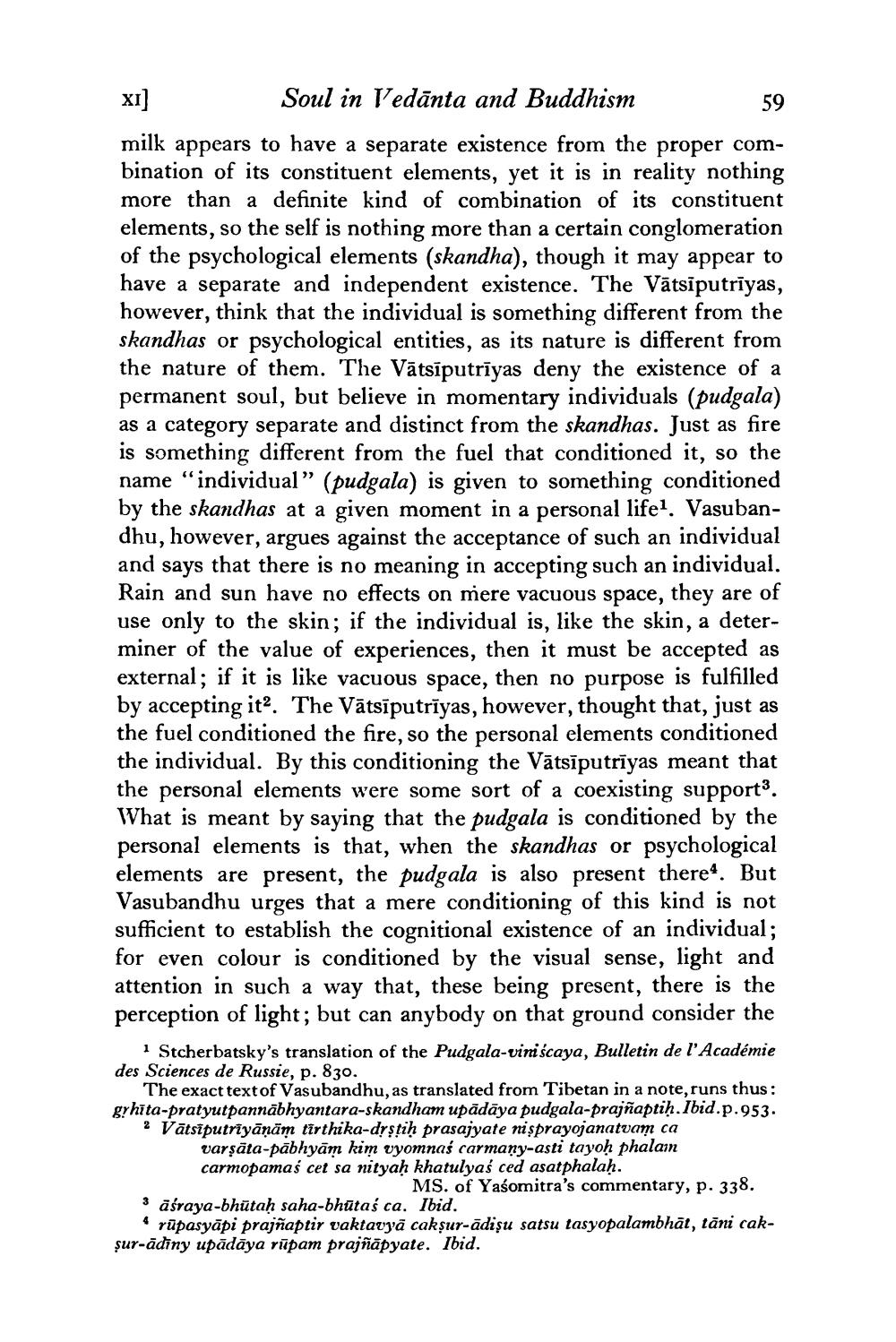________________
XI] Soul in l'edānta and Buddhism
59 milk appears to have a separate existence from the proper combination of its constituent elements, yet it is in reality nothing more than a definite kind of combination of its constituent elements, so the self is nothing more than a certain conglomeration of the psychological elements (skandha), though it may appear to have a separate and independent existence. The Vātsīputrīyas, however, think that the individual is something different from the skandhas or psychological entities, as its nature is different from the nature of them. The Vātsīputrīyas deny the existence of a permanent soul, but believe in momentary individuals (pudgala) as a category separate and distinct from the skandhas. Just as fire is something different from the fuel that conditioned it, so the name "individual” (pudgala) is given to something conditioned by the skandhas at a given moment in a personal lifel. Vasubandhu, however, argues against the acceptance of such an individual and says that there is no meaning in accepting such an individual. Rain and sun have no effects on mere vacuous space, they are of use only to the skin; if the individual is, like the skin, a determiner of the value of experiences, then it must be accepted as external; if it is like vacuous space, then no purpose is fulfilled by accepting it. The Vātsīputrīyas, however, thought that, just as the fuel conditioned the fire, so the personal elements conditioned the individual. By this conditioning the Vātsīputrīyas meant that the personal elements were some sort of a coexisting supporto. What is meant by saying that the pudgala is conditioned by the personal elements is that, when the skandhas or psychological elements are present, the pudgala is also present there. But Vasubandhu urges that a mere conditioning of this kind is not sufficient to establish the cognitional existence of an individual; for even colour is conditioned by the visual sense, light and attention in such a way that, these being present, there is the perception of light; but can anybody on that ground consider the
i Stcherbatsky's translation of the Pudgala-viniscaya, Bulletin de l'Académie des Sciences de Russie, p. 830.
The exact text of Vasubandhu, as translated from Tibetan in a note, runs thus: gyhita-pratyutpannābhyantara-skandham upādāya pudgala-prajñaptih. Ibid.p.953. 2 Vätsiputrīyāņām tirthika-drstih prasajyate nisprayojanatuam ca
varşāta-pābhyām kim vyomnaś carmany-asti tayo” phalam carmopamas cet sa nityaḥ khatulyaś ced asatphalah.
MS. of Yasomitra's commentary, p. 338. 3 aśraya-bhūtaḥ saha-bhūtaś ca. Ibid.
* rūpasyāpi prajñaptir vaktavyā cakşur-ādişu satsu tasyopalambhāt, tāni caksur-ainy upādãya r@pam prajñāpyate, Ibid.




